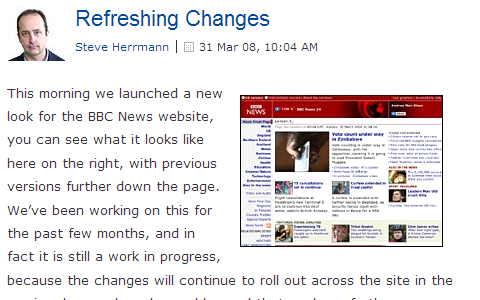Fresh from its success with Twitter, 10 Downing Street is preparing for a weekend of social media experimentation, in association with Puffbox.
This Saturday, Gordon Brown is hosting a gathering of around 20 left-leaning world leaders under the banner of Progressive Governance, to discuss globalisation, climate change, development and international institutional reform. (It got a brief mention in yesterday’s monthly press conference, but you’d be forgiven for missing it.) With the renewed appetite for online experimentation at Number 10, I was asked to put together a microsite for the event – running on WordPress, and incorporating a few ‘web 2.0’ tools and tricks.
The site went live late this afternoon – sort of. There’s very little to see so far: the supporting materials, and our ideas of what to do with them, are still coming together. In fact, I fully expect to be coding up new templates and functions live on the day. I know rapid development has become a bit of a Puffbox trademark, but we’ve never cut it quite this fine before. 🙂
The centrepiece will be a live video stream of the proceedings, with a text commentary / discussion thread alongside. You could call it ‘live tweeting’, but we’re probably not going to use Twitter (tbc though). We’ll be posting the conference’s discussion papers for online viewing, with the opportunity for you to post your comments alongside. We’re hoping to get photos beamed into the site from the conference venue, via Downing Street’s new Flickr account; their well-established YouTube channel may also come into play. As may anything else which crosses my mind in the meantime.
It’s an ideal opportunity for innovation: a one-off, relatively low-profile event, not exactly on the scale of a G8, but still significant enough to be taken seriously. The ludicrously tight timeframe is forcing us to make rapid, almost instinctive decisions: in my book, that’s a good thing.
If you’re interested to see what we make of it, believe me – so am I. It all happens on Saturday morning, with the live proceedings due to wind up in the early afternoon. With Arsenal-Liverpool Round Two kicking off at 12.45pm, I’m relying on my fellow Gooner, David Miliband to ensure things stay on schedule.


 I’m not sure I need to waste my time explaining why you need to go to TheyWorkForYou and sign up to MySociety’s campaign to
I’m not sure I need to waste my time explaining why you need to go to TheyWorkForYou and sign up to MySociety’s campaign to